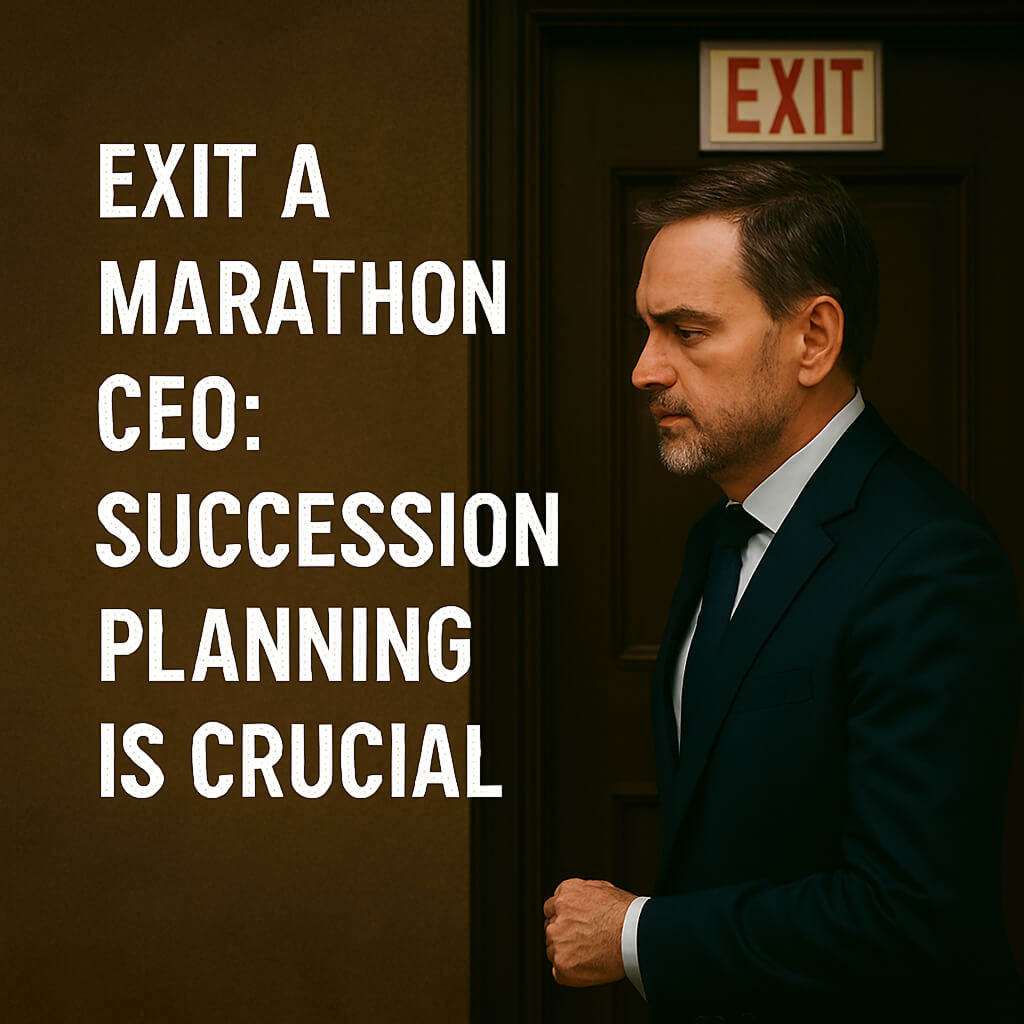What happens when a CEO of 20+ years suddenly exits?
I witnessed the aftermath firsthand, and it wasn’t pretty.
Recently, I coached a new CEO stepping into the enormous shoes of a predecessor who had led for decades.
The challenge wasn’t just daunting.
It was like fighting a ghost that haunted every corridor of the organization.
The Shadow CEO Effect
This new leader wasn’t just managing a company. He was battling an invisible force:
• “We’ve always done it this way”became the unofficial company motto
• Every decision was measured against an idealized memory of the former leader
• Innovation stalled as employees unconsciously resisted change
• The new CEO’s words: “I’m racing against a shadow CEO who isn’t even here”
The Real Problem?
No Succession Plan!
[The cost of poor succession planning isn’t measured in months, but in years of lost momentum.]
The organization had committed the cardinal sin of leadership transitions: treating succession as an event rather than a process.
The previous CEO had built an impressive legacy, but failed to prepare the organization for life after their departure.
What should have been a seamless transition became a painful identity crisis.
Three Critical Lessons for Every Organization
1. Start planning for succession on day one
Marathon CEOs create marathon-sized voids.
The longer a leader stays, the earlier succession planning must begin.
Don’t wait until retirement announcements – by then, it’s already too late.
2. Communication prevents chaos
During my client’s transition, the lack of clear messaging created a vacuum that quickly filled with uncertainty.
The best succession plans include robust communication strategies that begin long before the handover.
3. Onboarding isn’t just for entry-level employees
My client received a brief handover and was essentially told “good luck.”
Even experienced executives need structured support when stepping into legacy roles.
Comprehensive onboarding and executive coaching should be non-negotiable components of succession.
Reflection: The Legacy Beyond Leadership
A Marathon CEO’s influence doesn’t simply vanish when they step down. It lingers, leaving an indelible mark on the organization long after their departure.
The true measure of their leadership is not just the years they served, but in how they prepared the organization to thrive in their absence. Did they cultivate a culture of resilience?
Did they leave behind a system that would support new leadership and enable future growth? These are the questions that truly reflect the power of their tenure.
The test for any organization is whether it can not only survive but thrive after a legacy leader leaves.
This experience has been a powerful reminder: Effective succession planning isn’t just about filling a role – it’s about ensuring that the organization remains flexible, adaptable, and empowered, regardless of who sits in the CEO chair.
As new leaders step into these challenging transitions, the key to their success isn’t just the will to break free from the past, but the foresight and support needed to create something new -something even greater.
In the end, leadership isn’t just about carrying a torch; it’s about lighting a new fire.
The Ultimate Test of Leadership
The true measure of a CEO isn’t just what they build during their tenure.
It’s whether what they built can thrive without them.
The most powerful question any long-serving leader should ask:
“Am I creating a company that can surpass my own achievements after I’m gone?”
–By Catherine Li-Yunxia
Top Global CEO Coach & C-Suite Coach 2023 | Keynote Speaker on Human Leadership | Author of Integral CEO

